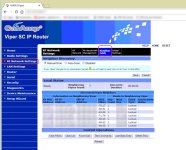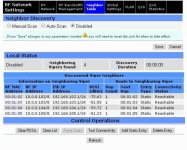ryangriggs
Lifetime Supporting Member
Hello everyone. I am trying to help solve a radio/comms issue involving several remote stations, using licensed spectrum (153 MHz) Calamp Viper/Dataradio modules and AB PLCs.
We have a somewhat odd setup, in that we have a repeater station between one of our remote locations and the main office, due to layout of the terrain.
The main office needs to monitor values at each remote pump station (5-10 min max interval), and occasionally update PLC values at the remote locations (weekly or less).
We need to receive fairly frequent/consistent updates at the main office (on the order of 5-10 minute intervals max).
Here's a diagram of our setup: https://snag.gy/As0pCJ.jpg

The problem:
Most of the time everything works great and data is updated at the main office within a few seconds (i.e. less than 60).
However, approximately once or twice daily, we see comm failures for the Repeater and TC stations. These comm fails occur within minutes of each other, and can last for 1-2 hours. Then the Repeater and TC failures resolve within minutes of each other, and everything continues to work fine for several hours/days, with fast updates on the order of a few seconds.
During these failures, the DC station never loses comms, and its values continue to update at the main office.
We also see somewhat more frequent comm fails between the Repeater and Main Office which don't correspond to failures at TC. However, these failures are short and usually resolve within 5-10 minutes.
During the comm failures, I can still Ping the Repeater and TC radios from the main office.
We're planning to do a radio test this week to determine if it's a Radio Path issue or a networking issue.
Any insight and suggestions for diagnostics would be greatly appreciated.
We have a somewhat odd setup, in that we have a repeater station between one of our remote locations and the main office, due to layout of the terrain.
The main office needs to monitor values at each remote pump station (5-10 min max interval), and occasionally update PLC values at the remote locations (weekly or less).
We need to receive fairly frequent/consistent updates at the main office (on the order of 5-10 minute intervals max).
Here's a diagram of our setup: https://snag.gy/As0pCJ.jpg

The problem:
Most of the time everything works great and data is updated at the main office within a few seconds (i.e. less than 60).
However, approximately once or twice daily, we see comm failures for the Repeater and TC stations. These comm fails occur within minutes of each other, and can last for 1-2 hours. Then the Repeater and TC failures resolve within minutes of each other, and everything continues to work fine for several hours/days, with fast updates on the order of a few seconds.
During these failures, the DC station never loses comms, and its values continue to update at the main office.
We also see somewhat more frequent comm fails between the Repeater and Main Office which don't correspond to failures at TC. However, these failures are short and usually resolve within 5-10 minutes.
During the comm failures, I can still Ping the Repeater and TC radios from the main office.
We're planning to do a radio test this week to determine if it's a Radio Path issue or a networking issue.
Any insight and suggestions for diagnostics would be greatly appreciated.




